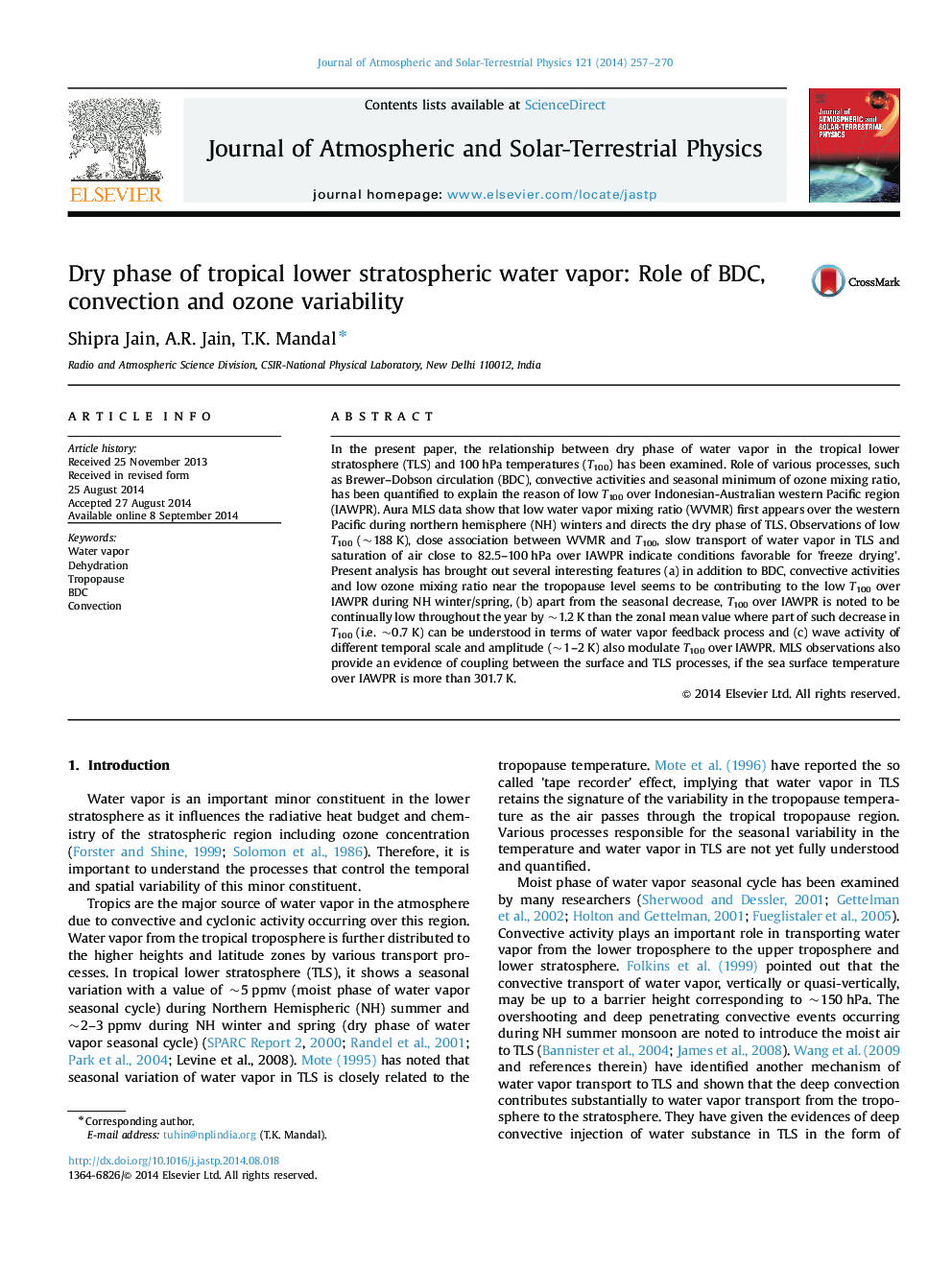| Article ID | Journal | Published Year | Pages | File Type |
|---|---|---|---|---|
| 1776558 | Journal of Atmospheric and Solar-Terrestrial Physics | 2014 | 14 Pages |
Abstract
In the present paper, the relationship between dry phase of water vapor in the tropical lower stratosphere (TLS) and 100 hPa temperatures (T100) has been examined. Role of various processes, such as Brewer-Dobson circulation (BDC), convective activities and seasonal minimum of ozone mixing ratio, has been quantified to explain the reason of low T100 over Indonesian-Australian western Pacific region (IAWPR). Aura MLS data show that low water vapor mixing ratio (WVMR) first appears over the western Pacific during northern hemisphere (NH) winters and directs the dry phase of TLS. Observations of low T100 (~188 K), close association between WVMR and T100, slow transport of water vapor in TLS and saturation of air close to 82.5-100 hPa over IAWPR indicate conditions favorable for 'freeze drying'. Present analysis has brought out several interesting features (a) in addition to BDC, convective activities and low ozone mixing ratio near the tropopause level seems to be contributing to the low T100 over IAWPR during NH winter/spring, (b) apart from the seasonal decrease, T100 over IAWPR is noted to be continually low throughout the year by ~1.2 K than the zonal mean value where part of such decrease in T100 (i.e. ~0.7 K) can be understood in terms of water vapor feedback process and (c) wave activity of different temporal scale and amplitude (~1-2 K) also modulate T100 over IAWPR. MLS observations also provide an evidence of coupling between the surface and TLS processes, if the sea surface temperature over IAWPR is more than 301.7 K.
Related Topics
Physical Sciences and Engineering
Earth and Planetary Sciences
Geophysics
Authors
Shipra Jain, A.R. Jain, T.K. Mandal,
